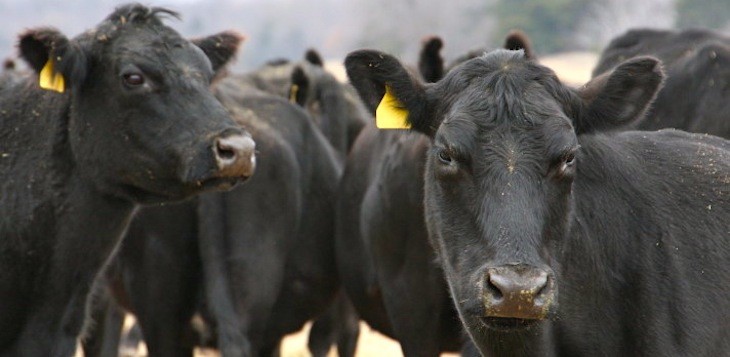Analyst: Cattle markets roiled by the coronavirus
by March 6, 2020 8:10 am 2,340 views

The threat of the coronavirus (COVID-19) has gripped the U.S. by the horns and the cattle industry is no exception, according to Derrell Peel, livestock marketing analyst with the Oklahoma State University Extension Service. Peel said the combination of broad-based market fears and real market impacts have taken a big toll.
He said one of the functions of futures markets is to anticipate the worst and, not surprisingly, futures markets have taken the biggest hit. Cash fed and feeder cattle markets have seen the pressure grow as the uncertainty and fear have expanded recently. Live cattle futures are down over 12% from levels prior to the first wave of coronavirus news in January.
Likewise, Peel said cash fed cattle prices are down about 7.5% over the same period. He said feeder cattle futures dropped initially in January, then recovered significantly before dropping sharply in the past week. Cash feeder cattle prices have tried to follow seasonal patterns with stocker prices increasing seasonally until last week when the weight of lower futures and growing uncertainty. COVID-19 situation pushed cash prices sharply lower. He said feeder futures are down almost 11% from January and cash prices for 450-500-pound No.1 steers in Oklahoma dropped 6% last week.
“The situation with COVID-19 is another example of a ‘black swan’ – rare, unforeseen events that have sudden, unexpected and dramatic impacts on markets. This situation, however, is different in a couple of fundamental ways from other such events in cattle markets, such as the packing plant fire last year or even the first BSE case in late 2003,” Peel explained.
He said those previous events were within the beef industry whereas the coronavirus is a much broader and varied set of effects in the U.S. and global economies. Peel said this makes it much harder to assess the multitude of different impacts that are occurring or could occur.
Secondly, he said the packing plant fire and BSE happened as a single event at a specific point in time and afterward it was relatively easier to figure out the timelines of recovery. Conversely, the COVID-19 situation is not a single event and is still developing, but it should end over a period of time at some point in the future.
“Clearly, the uncertainty has not peaked yet and the best we can hope for, from a market perspective, is that there will come a time when it appears the worst is over and we can see a path to a lengthy recovery in markets. It seems unlikely that any definitive news is forthcoming, certainly not in the next few weeks, which would allow markets to bounce back with any confidence,” Peel said.
Peel said he doesn’t see good prospects of a sudden market recovery. He said cattle producers who have to make marketing decisions in the next 30-60 days for sure, and perhaps longer, should look for markets to remain weak with a decent prospect of getting weaker.
“Obviously, the news about COVID-19 is changing constantly and may support brief short-lived market bounces. Longer-term, I don’t think we are ready yet to change the overall outlook for the year, but the prospect is growing that we might have to trim back our expectations for 2020. Producers probably should not make dramatic changes to production and marketing plans just yet, but it would be a good idea to think about adjusting things if we have to shift from offense to defense for the entire year,” he said.
